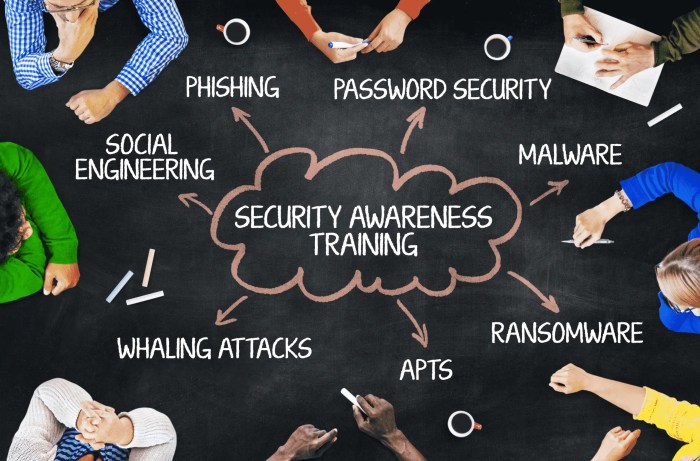Which of the following is true of CUI cyber awareness? This question highlights the critical need for organizations to understand and address the protection of Controlled Unclassified Information (CUI) in the digital age. CUI cyber awareness encompasses the knowledge, skills, and practices necessary to safeguard sensitive information from unauthorized access, use, disclosure, disruption, modification, or destruction.
In this comprehensive guide, we will explore the definition and importance of CUI cyber awareness, identify different types and sources of CUI, and discuss the role of training, education, policies, procedures, tools, and technologies in enhancing CUI cyber awareness. We will also provide metrics and methods for measuring the effectiveness of CUI cyber awareness initiatives, ensuring that organizations can effectively protect their sensitive information and comply with regulatory requirements.
CUI Cyber Awareness Definition and Importance: Which Of The Following Is True Of Cui Cyber Awareness

Controlled Unclassified Information (CUI) refers to sensitive information that requires protection, but does not rise to the level of classified information. CUI cyber awareness involves understanding the nature of CUI, the threats to its security, and the measures necessary to safeguard it.
It is critical for organizations to prioritize CUI cyber awareness to protect their sensitive data and mitigate cybersecurity risks.
Types and Sources of CUI
CUI encompasses various types of information, including:
- Personally identifiable information (PII)
- Financial information
- Health information
- Research and development data
- Technical data
CUI can originate from a wide range of sources, such as government agencies, contractors, and private sector organizations.
CUI Cyber Awareness Training and Education
Training and education play a vital role in enhancing CUI cyber awareness. Effective training programs should cover:
- Identification and handling of CUI
- Cybersecurity threats and vulnerabilities
- Security measures and best practices
- Incident response and reporting
CUI Cyber Awareness Policies and Procedures, Which of the following is true of cui cyber awareness
Clear policies and procedures are essential for ensuring consistent handling of CUI. These policies should address:
- Access controls
- Data handling and storage
- Incident reporting and response
- Regular security audits and reviews
CUI Cyber Awareness Tools and Technologies
Various tools and technologies can enhance CUI cyber awareness, including:
- Security information and event management (SIEM) systems
- Data loss prevention (DLP) tools
- Endpoint security solutions
- Identity and access management (IAM) systems
- Security awareness training platforms
CUI Cyber Awareness Metrics and Measurement
Measuring the effectiveness of CUI cyber awareness initiatives is crucial. Metrics may include:
- Number of CUI security incidents
- Time to detect and respond to CUI incidents
- Employee understanding of CUI policies and procedures
- Compliance with CUI regulations and standards
Top FAQs
What is CUI cyber awareness?
CUI cyber awareness refers to the knowledge, skills, and practices necessary to protect Controlled Unclassified Information (CUI) from unauthorized access, use, disclosure, disruption, modification, or destruction.
Why is CUI cyber awareness important?
CUI cyber awareness is important because CUI contains sensitive information that could be harmful to an organization or individuals if compromised. Protecting CUI is essential for maintaining confidentiality, integrity, and availability of sensitive information.
What are the different types of CUI?
There are various types of CUI, including financial information, trade secrets, research data, and personally identifiable information (PII).
How can I improve my CUI cyber awareness?
To improve your CUI cyber awareness, you can attend training programs, read articles and books, and stay updated on the latest cybersecurity threats and best practices.

